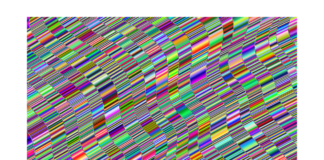The notion of “Alien technology” often conjures images of advanced, extraterrestrial civilizations possessing capabilities far beyond our current understanding. While the term is commonly associated with science fiction and speculative theories, there is no concrete evidence of direct contact with extraterrestrial beings or their technology as of my knowledge cutoff in January 2022. However, discussions about the potential existence of alien technology persist in various scientific, philosophical, and popular circles. In exploring this topic, it is crucial to distinguish between established scientific knowledge and speculative hypotheses. Here, we’ll delve into the concept of alien technology and touch upon key points related to this intriguing and speculative field.
Search for Extraterrestrial Intelligence (SETI):
The scientific community actively engages in the search for extraterrestrial intelligence (SETI). Researchers use radio telescopes and other tools to detect signals or patterns that could indicate communication from intelligent extraterrestrial civilizations. Despite decades of efforts, no conclusive evidence has been found.
Exoplanets and the Goldilocks Zone:
The discovery of thousands of exoplanets in the habitable zone, often referred to as the “Goldilocks zone,” has fueled speculation about the possibility of extraterrestrial life. These planets have conditions that might support liquid water, a crucial ingredient for life as we know it.
Fermi Paradox:
The Fermi Paradox raises the question of why, given the vast number of potentially habitable planets in the universe, we have not yet observed any extraterrestrial civilizations. Various theories, from self-destruction to the idea that advanced civilizations are avoiding us, have been proposed to explain this apparent contradiction.
Technosignatures:
In the search for extraterrestrial technology, scientists explore the concept of “technosignatures” — potential indicators of advanced civilizations. These could include detectable signals, megastructures, or other anomalies that deviate from natural astrophysical phenomena.
UFOs and Unidentified Aerial Phenomena (UAP):
Sightings of unidentified flying objects (UFOs) or unidentified aerial phenomena (UAP) have fueled public interest in the possibility of extraterrestrial visitation. While these sightings are real and often unexplained, they do not necessarily imply alien technology. The U.S. government’s release of declassified UFO/UAP footage has sparked renewed discussions on this topic.
Roswell Incident and Area 51:
The Roswell UFO incident in 1947 and the secretive Area 51 military base in Nevada have become central to UFO lore and conspiracy theories. The Roswell incident, initially reported as the recovery of a “flying disc,” was later explained as a weather balloon. Area 51’s association with classified military projects has fueled speculation about extraterrestrial technology.
Astrobiology and the Search for Life:
Astrobiology explores the potential for life beyond Earth. Scientists study extreme environments on Earth to understand where life might exist elsewhere. The discovery of extremophiles has expanded our understanding of where life could thrive, even in seemingly inhospitable conditions.
Interstellar Travel and Warp Drives:
Theoretical concepts like warp drives, popularized by the physicist Miguel Alcubierre, explore the possibility of faster-than-light travel. While these ideas remain speculative and face significant theoretical challenges, they capture the imagination regarding the potential for advanced propulsion systems.
Exoplanet Atmospheric Analysis:
Advancements in telescope technology allow scientists to analyze the atmospheres of exoplanets. The study of biosignatures, such as the presence of specific gases, aims to identify potential signs of life. However, the interpretation of these atmospheric data is complex and subject to ongoing research.
Public Interest and Cultural Impact:
The fascination with the possibility of alien technology has permeated popular culture, influencing literature, films, and public discourse. The cultural impact of alien-themed media reflects humanity’s enduring curiosity about the unknown and the potential for extraterrestrial civilizations.
Despite the absence of conclusive evidence, the pursuit of knowledge about potential alien technology continues to be a driving force in scientific and speculative communities. The Search for Extraterrestrial Intelligence (SETI) exemplifies this quest, employing advanced tools to scan the cosmos for signals that might indicate communication from intelligent extraterrestrial beings. The discovery of exoplanets within the habitable zone has intensified discussions about the potential for life beyond Earth. The Goldilocks zone, where conditions may be suitable for liquid water, is a key factor in identifying planets with the potential to support life as we understand it.
The Fermi Paradox, named after physicist Enrico Fermi, raises thought-provoking questions about the apparent contradiction between the high probability of habitable planets and the absence of observed extraterrestrial civilizations. Various theories attempt to address this paradox, ranging from the possibility of self-destruction among advanced civilizations to the idea that extraterrestrial beings may intentionally avoid contact with Earth.
The concept of “technosignatures” represents a proactive approach to detecting extraterrestrial technology. Scientists explore potential indicators such as detectable signals or anomalies that deviate from natural astrophysical phenomena. While these efforts have yet to yield definitive results, the exploration of technosignatures remains a critical aspect of the scientific search for extraterrestrial intelligence.
UFO sightings and encounters with unidentified aerial phenomena (UAP) have captured public attention and fueled speculation about the existence of alien technology. While these events are documented and often unexplained, they do not necessarily imply the presence of extraterrestrial beings or their technology. Recent declassified footage of UAP by the U.S. government has reignited public interest and spurred further discussions on the topic.
Historical incidents like the Roswell UFO incident in 1947 and the association of Area 51 with classified military projects have become iconic in UFO lore. The Roswell incident, initially reported as the recovery of a “flying disc,” was later explained as a weather balloon. Area 51’s secretive nature has led to numerous conspiracy theories, including speculation about the reverse engineering of alien technology.
Astrobiology, a field that explores the potential for life beyond Earth, contributes valuable insights to the broader discussion. Scientists study extremophiles—organisms that thrive in extreme environments on Earth—to expand our understanding of where life could exist in the universe. The search for biosignatures, such as specific gases in exoplanet atmospheres, is a key component of astrobiology’s efforts to identify potential signs of extraterrestrial life.
Theoretical concepts like warp drives, which propose faster-than-light travel, add a speculative dimension to discussions about advanced extraterrestrial propulsion systems. While these ideas are firmly rooted in theoretical physics, their practical feasibility remains a subject of ongoing exploration.
Advancements in telescope technology have allowed scientists to analyze the atmospheres of exoplanets. The study of biosignatures, such as the presence of specific gases, aims to identify potential signs of life. However, interpreting atmospheric data from distant exoplanets poses considerable challenges and is an active area of research.
Beyond the scientific realm, the cultural impact of the concept of alien technology is evident in literature, films, and public discourse. Popular culture reflects humanity’s enduring curiosity about the unknown and our fascination with the possibility of extraterrestrial civilizations. As technological capabilities and scientific understanding continue to advance, the exploration of alien technology remains an evolving and multifaceted endeavor, shaping our collective imagination and driving our quest to comprehend the mysteries of the cosmos.
In summary, the concept of alien technology remains speculative and firmly rooted in scientific exploration, theoretical physics, and the search for extraterrestrial life. While advancements in astronomy, astrobiology, and technology continue to expand our understanding of the universe, concrete evidence of alien technology or contact with extraterrestrial civilizations remains elusive. As scientific inquiry progresses, our knowledge of the cosmos may evolve, offering new insights into the profound question of whether we are alone in the universe.














